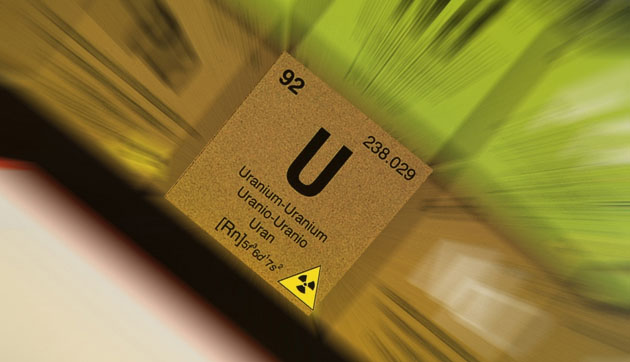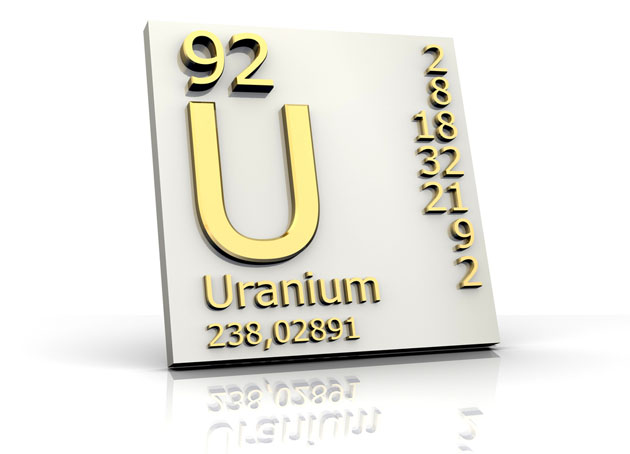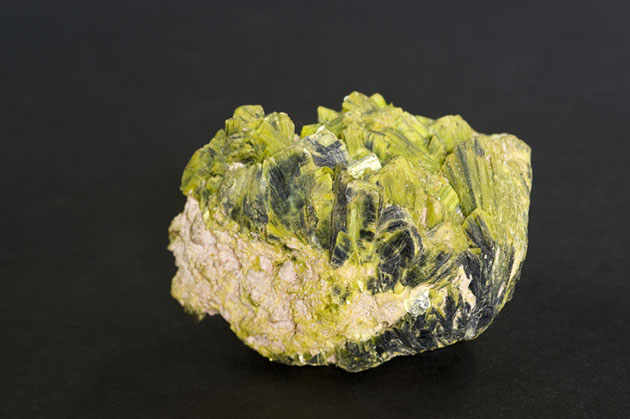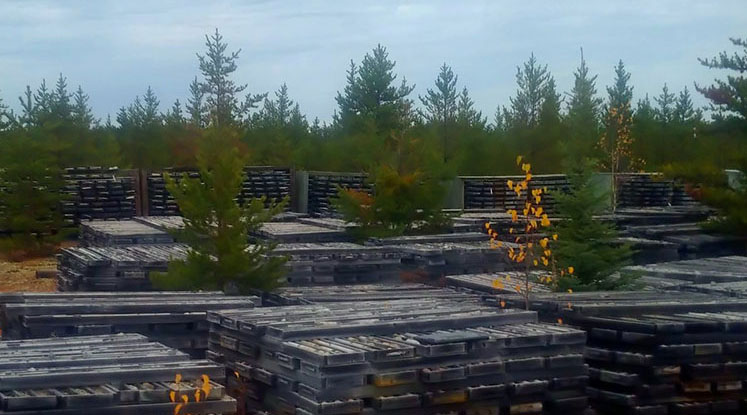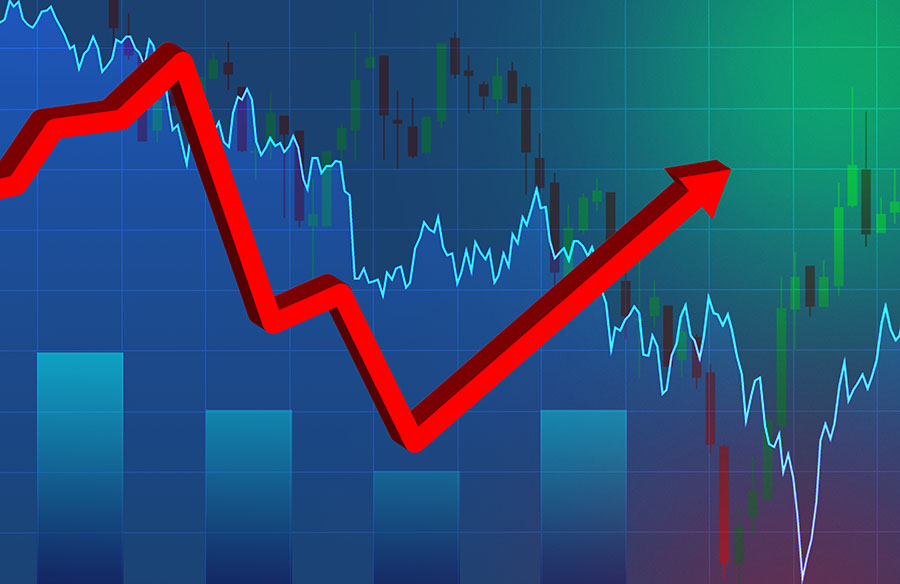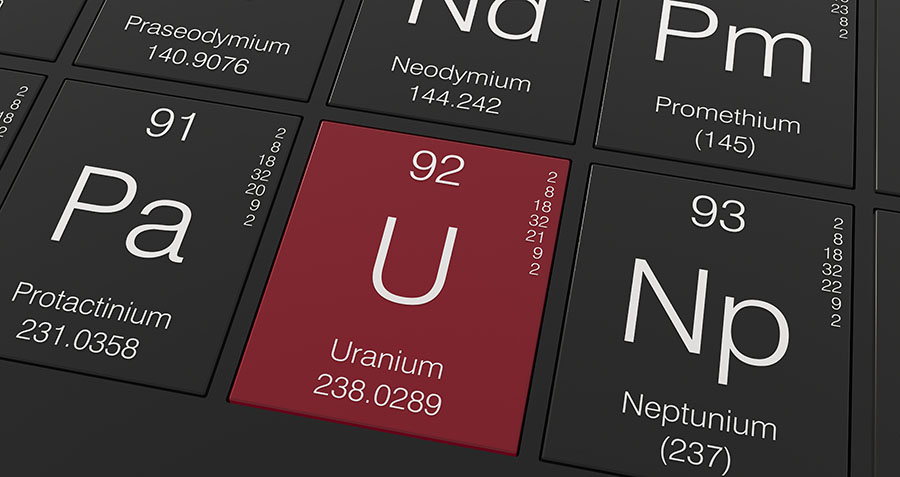The Energy Report: As a retired sell-side analyst and hedge fund VP, what do you look for in selecting and analyzing investment situations?
Malcolm Shaw: My background is actually geology, but over time I got pulled into finance. There was an advantage to having geological or technical knowledge, particularly in evaluating small- and mid-cap companies. Technical knowledge aside, the key for me is good management, and I've met hundreds of management teams over the years. Good management with sector expertise is always my first screening tool. After that I like companies that are under covered or generally unloved by the street because they tend to be where the market is less efficient. I'm not really going to add any value talking about names like Exxon Mobil Corp. (XOM:NYSE) or Encana Corp. (ECA:TSX; ECA:NYSE) simply because the information is so well distributed and the market is more efficient in larger caps, but not in smaller caps.
Next, a company should have a good balance sheet, because if it doesn't, that adds a layer of financial risk. Then you need to have an asset that can have a material impact on the company's value in the market, either through discovery or the underlying asset value. Sometimes you see junior companies with great assets become exceedingly cheap relative to the underlying project value. You see that when they get hurt on spot commodity prices or short-term news events and yet the underlying value of the asset is clear. That's where you can get some pretty big disconnects. That's another place where I like to focus: In early-stage projects, understanding the data as soon as it is available can be a real advantage too, though a speculative component always remains.
TER: As an aside, I know that you're connected with Chen Lin, who we talk with quite often here at The Energy Report. How did that connection come about?
MS: We met through a common contact in New York, who I'd known from my time at K2. I think the first time I ever talked to Chen was on Petaquilla Minerals Ltd. (PTQ:TSX; PTQMF:OTCBB; P7Z:FSE), which was an interesting situation then. We were looking at it in the fund at the time and we just started talking from there about once a month on average.
TER: Before we get into specifics, maybe you can give us your view of the global energy arena and where you think things are headed from here?
MS: There are so many elements of global energy. In North America, natural gas is always a topic of discussion. Gas here is incredibly cheap due our technology, infrastructure and access to services that make us so efficient at exploiting natural gas. We're at least a decade ahead of the rest of the world in that regard. Our gas prices here are depressed relative to the rest of the world, which is why you're going to see a lot of interest in LNG projects going forward.
The oil side is probably most closely related to GDP. The only indicator that I've found to be useful over the years is OPEC's spare capacity, which is now in an average range. I don't really have a strong view one way or another on oil.
Then there's uranium, which continues to be a clean source of energy and I believe will continue to be over the next 20 years. There simply aren't a lot of alternatives. Renewables, like wind and solar, are interesting, but even wind and solar have their own challenges in terms of efficiency and environmental impact. Think of all the materials that go into building the magnets for wind turbines and the cells for solar panels, for example. Also, wind is generally localized and geothermal even more so; they are not commercial-scale operations.
TER: It seems like oil has settled down somewhat. Nobody's talking about $150 per barrel ($150/bbl) oil anymore and not too worried about $60/bbl oil either. Would you say we're in a comfortable trading range?
MS: Exactly. $80/bbl is about the right number. Much below that $70–80 range you start seeing capital projects curtailed or delayed. That usually generates a supply response relatively quickly. Not to mention that OPEC always does its best to keep oil prices within a price band and has been fairly effective in doing so over time.
TER: It sounds like you're probably more excited about uranium than by oil and gas at this point. Is that a correct assessment?
MS: Uranium is probably my favorite "out of favor" sector right now. The supply and demand fundamentals are well known. Asian reactor build-outs are still showing good growth and the Russian HEU agreement expires at the end of this year. The purchase of Uranium One Inc. (UUU:TSX) by ARMZ, which is basically Russian controlled, should be an indicator to the rest of the market of where the Russians think the uranium price is going. It's just a matter of time until we see more reactor restarts in Japan. That should be the match that lights the fire and 2013-14 should be interesting.
TER: Are you expecting prices to recover in the next year or so?
MS: I do, and most analysts seem to be converging on a price target in 2013 to 2014 of $65–70 a pound, which I think is fair for that period.
TER: The uranium business has been pretty unrewarding for most of the smaller companies that got involved in exploration over the past 10 years, but there have been a few survivors that have managed to come up with some interesting discoveries. What do you see that looks promising?
MS: In 2006 and 2007, there were probably hundreds of junior uranium companies, a lot of which didn't have the knowledge, expertise and experience to be in the uranium sector. You have to have a real asset and a real management team at this point to be left standing in the uranium market. Over the last few years, my favorite story was probably Hathor, which was bought in late 2011 by Rio Tinto Plc (RIO:NYSE; RIO:ASX; RIO:LSE; RTPPF:OTCPK).
Cameco Corp. (CCO:TSX; CCJ:NYSE) is an easy large-cap, go-to name. It's relatively cheap in terms of historical price to cash flow. It is the second-lowest-cost producer next to Uranium One.
On the smaller-cap side, probably the most interesting situation I see currently is this discovery made at Patterson Lake by Alpha Minerals Inc. (AMW:TSX.V) and Fission Energy Corp. (FIS:TSX.V; FSSIF:OTCQX). They're 50/50 joint venture partners on the project and finding some good mineralization at very shallow depths in the less-explored western Athabasca basin. They are drilling what may be the largest radioactive boulder field in the Athabasca basin, which they found on surface on a shoestring budget.
What they found looks like it's basement-hosted uranium along a long conductor corridor that has a 2–3 kilometer prospective strike length. Most recently they drilled a hole that returned 57½ meters of strong mineralization, with what look to be some very high-grade intervals within it. Fission has some core photos on its website, which I would encourage readers to look at. Anyone in the uranium sector can't help but take notice when you start seeing rock like that. The assays are pending, but there's no question that the visuals look good.
Alpha Minerals and Fission could end up with several deposits along that conductor corridor and they still haven't found the source of those boulders. When they do, it will be uranium directly below glacial gravels, and we haven't seen that yet. This is probably one of the best uranium discovery stories on the planet right now, given the depth, location and the data we've seen so far.
I credit Alpha's management team for putting together the budget they did and staying alive through some very tough times. Their discovery was made on one of the last holes of the 2012 fall drilling program, when Alpha looked like it was on its last legs, so you have to give management a lot of credit for sticking with it. Ben Ainsworth, the CEO, was VP of Exploration at Hathor during that company's discovery and delineation phase so he's got the experience I like to see in junior companies. Michael Gunning recently joined as chairman. He was the CEO of Hathor and took it through the final delineation phase and on through its sale to Rio. These are two top-drawer individuals with a depth of experience not often seen.
Fission adds a lot of value to the junior venture as well, and I think there are a lot of complimentary skill sets between the two companies. Fission Chairman and CEO Dev Randhawa has done a great job of keeping the company going in a very tough market. Fission President, COO and Director Ross McElroy is very well known and well regarded, too. Between the two companies, you really have a great combined team.
TER: Do you have any price projections on Fission and Alpha from here?
MS: It's still early. I did write an article on Seeking Alpha that discussed a hypothetical deposit in the 50 million pound (50 Mlb) range and just doing some back-of-the-envelope math on it using $10/lb, which given the depth I don't think is a stretch. A 50-Mlb deposit should be worth $500M down the road. Alpha's current fully diluted share count is about 25 million shares and with further dilution along the way, it may get to 30–35M shares. You're looking at a $7–8 stock. What gets me really excited is 50 Mlb might be conservative, as there's certainly room to put multiples of that size together.
It's drilling holes that take about two days per hole, per rig, and it has two rigs going. News flow has been pretty consistent. I'd expect news every week or two.
TER: What do you think the overall prospects are for some of these smaller uranium exploration companies?
MS: Most of those that are still standing have real teams with real assets. One in the U.S. I like is called Powertech Uranium Corp. (PWE:TSX.V). It has an in-situ recovery (ISR) project, which involves putting in a well field and pumping a solution through the deposit to dissolve the uranium that is extracted from the fluid at surface. It's an incredibly cheap process. This is probably the highest-grade ISR project I've seen recently, at about 0.2% U308, which is twice the grade of an average ISR project in the U.S. Powertech's market cap is around $15M. It should have its final permits by mid-2013. Capital costs are only around $40–50M with projected operating costs in the $30/lb range. On a 1 Mlb per year project, that makes for quick payback and a very profitable operation at $65/lb uranium. I'm a little more wary of the hard rock miners. Some of the deeper deposits get me a little concerned from a junior perspective because they're very expensive and time intensive to develop and delineate.
TER: Where is Powertech's property located?
MS: Its Dewey Burdock project is in South Dakota, which is historically not thought of as a uranium-producing region. It spills across the border into Wyoming in what is called a roll-front uranium deposit, where the uranium is deposited in sandstones through a chemical process. There's a lot of potential there. I think that South Dakota, as a state, is just in the process of figuring out how it's going to handle it going forward. I'd expect approvals around mid-2013. Once it gets funding, which I think is the key question, it should be up and running 12-18 months later. Powertech would make a very nice accretive acquisition for four companies that I can think of off the top of my head. I think it's just a matter of time until one of them gets off the fence and says, "I need to own this."
TER: What other companies look viable in the uranium business?
MS: I think Uranerz Energy Corp. (URZ:TSX; URZ:NYSE.MKT) is a really well run company with very nice assets. It's also in the in-situ business. It would probably make a decent combination with Powertech at some point but needs to get its project up and running first, at which point its cashflow could easily fund construction of a new project like Dewey Burdock. It doesn't require a lot of imagination to see that potential.
I like Energy Fuels Inc. (EFR:TSX) as well. It's more of a call option on uranium as it's a slightly higher-cost structure, but its leverage to uranium is clear. It could become a go-to name if and when the uranium market does pick up.
TER: Turning to the oil and gas business, what do you see there that looks good?
MS: Oil and gas has been a little tough lately, particularly in the Canadian market. It's really been a rifle-shooters' market. What I tend to look for in oil and gas is probably a little more exotic than most people. One that I'm following very closely is called Pan Orient Energy Corp. (POE:TSX.V). It fits the bill in terms of skilled management that I've known for a long time. It has a fantastic balance sheet with over $2 per share in cash. It has some 1,300-1,500 barrels per day (1.3-1.5 Mb/d) of production in onshore Thailand.
One of the key things I like about Pan Orient is its Indonesian exploration acreage. This is elephant territory and the rewards are significant, but these wells cost $5–8M to drill. It's drilling one right now where the P50 recoverable, based on company estimates, is about 137 million barrels (MMbbl). Its interest on the block is 77%. An in-ground barrel in Indonesia would be worth something on the order of $5–8, so 77% of a 137 MMbbl target, given that Pan Orient only has 56M shares, makes the upside fairly significant. This is only one of a handful of targets of similar size and quality, so a miss on any given target doesn't impact my overall investment thesis of this being a skewed risk-reward situation. Given the company's cash balance and cash flow from its production in Thailand, the share price would have a hard time breaking below, say, the $2.50–3 range in any rational market. The upside is something in the $8–10 range, based on any one of those large targets working. If two of them start working, then you end up with a really interesting situation.
I've known the CEO for about nine years. We worked at the same company back in Calgary and I've kept in touch with him over the years and actually used to cover Pan Orient as a sell-side analyst until I left to go to K2. Another important point to consider is that its Indonesian block, in particular, Batu Gajah, is what I would call first-round relinquishment land and it's intermixed with PetroChina Co. Ltd. (PTR:NYSE; 857:HKSE). The writing's on the wall for Pan Orient down the road if it does end up making a discovery because that's at least one potential suitor that could take that asset off Pan Orient's hands.
TER: Do you have any other situations that you think look interesting?
MS: Another company that's probably one of my favorites from a valuation, management and asset standpoint is Advantage Oil and Gas Ltd. (AAV:NYSE; AAV:TSX). It has over a trillion cubic feet (Tcf) of well-defined gas in the Montney in Alberta. Advantage trades well below a dollar per thousand cubic feet (Mcf), which to me is the benchmark price to pay for a gas-in-the-ground resource in North America. Companies that have 1 Tcf should be worth about $1 billion. That was a rule I used when I started in the oil and gas business in the year 2000, when gas prices weren't all that different from where they are today. With Advantage, you're paying on the order of $0.60/Mcf for a very high-quality resource. At its flagship Glacier project, Advantage has shown it's one of the lowest-cost, if not the lowest-cost, gas producers in North America. I don't think Advantage will be around for long. Somebody will come along and snap it up at this price. It also has a significant amount of shares in an oil company called Longview Oil Corp. (LNV:TSX), which is a yield-payer that it recently spun out.
There are some interesting small companies I watch on the international side, like Iona Energy Inc. (INA:TSX.V), which is a North Sea producer and explorer. It's run by some of the same people who started Ithaca Energy Inc. (IAE:TSX). It recently closed an equity and debt financing deal that will give it a significant production base and a pretty aggressive growth profile, which if it can execute on, is going to make the current price of about $0.65 look pretty cheap.
Something a little more exotic is a company called Condor Petroleum Inc. (CPI:TSX), which is in Kazakhstan. Again, excellent management and good assets. It was a sleeper company for a while after its IPO disappointed a lot of investors, and it became an unloved stock, basically trading at core asset value around $0.40/share. Recently, it announced what could be a fairly high-impact discovery for which final logs and test data are pending. Analysts are estimating that recoverable reserves are 15–30 MMbbl. A good flow test could see Condor move up to the $0.75/share range without much difficulty. It is currently drilling a moderate-risk 800-billion cubic feet gas target as well, which would add additional upside to that level.
TER: What investment strategies do you recommend in the energy sector right now?
MS: I would always suggest that investors without much technical expertise should consult experts whenever they can, such as sell-side analysts and independent consulting firms. This applies for any sector. It's part of anyone's due diligence. I think it can really make all the difference, particularly with small-cap investment. I hear too many stories of investors getting overexposed in one name and being disappointed when things don't work out. You need to have a disciplined approach and do your due diligence and really understand what you own. That way, when news hits the wire you're not asking yourself, what does that mean? You're able to interpret it for yourself and react accordingly.
TER: You've given us some interesting food for thought here, Malcolm. Thanks for talking with us today.
MS: Thanks for the opportunity.
Malcolm Shaw is a retired sell-side analyst and former hedge fund vice president for K2 & Associates Inc. With a Master of Science in geology and 12 years of experience in the resource and investment industries, Shaw researches under-followed companies where digesting data can provide investors with a competitive edge the typical Wall Street analysis doesn't offer. He currently "hangs his hat" at the investment firm Hydra Capital Partners.
Want to read more Energy Report interviews like this? Sign up for our free e-newsletter, and you'll learn when new articles have been published. To see a list of recent interviews with industry analysts and commentators, visit our Interviews page.
DISCLOSURE:
1) Zig Lambo conducted this interview for The Energy Report and provides services to The Energy Report as an independent contractor. He or his family own shares of the following companies mentioned in this interview: None.
2) The following companies mentioned in the interview are sponsors of The Energy Report: Petaquilla Minerals Ltd., Fission Energy Corp., Uranerz Energy Corp., Energy Fuels Inc. and Pan Orient Energy Corp. Streetwise Reports does not accept stock in exchange for its services or as sponsorship payment.
3) Malcolm Shaw: I or my family own shares of the following companies mentioned in this interview: Petaquilla Minerals Ltd., Alpha Minerals Inc., Cameco Corp., Fission Energy Corp., Powertech Uranium Corp., Uranerz Energy Corp., Energy Fuels Inc., Pan Orient Energy Corp., Advantage Oil and Gas Ltd., Iona Energy Inc. and Condor Petroleum Inc. I personally am, or my family is, paid by the following companies mentioned in this interview: None. My company has a financial relationship with the following companies mentioned in this interview: None. I was not paid by Streetwise Reports for participating in this interview. Comments and opinions expressed are my own comments and opinions. I had the opportunity to review the interview for accuracy as of the date of the interview and am responsible for the content of the interview.
4) Interviews are edited for clarity. Streetwise Reports does not make editorial comments or change experts' statements without their consent.
5) The interview does not constitute investment advice. Each reader is encouraged to consult with his or her individual financial professional and any action a reader takes as a result of information presented here is his or her own responsibility. By opening this page, each reader accepts and agrees to Streetwise Reports' terms of use and full legal disclaimer.
6) From time to time, Streetwise Reports LLC and its directors, officers, employees or members of their families, as well as persons interviewed for articles and interviews on the site, may have a long or short position in securities mentioned and may make purchases and/or sales of those securities in the open market or otherwise.




